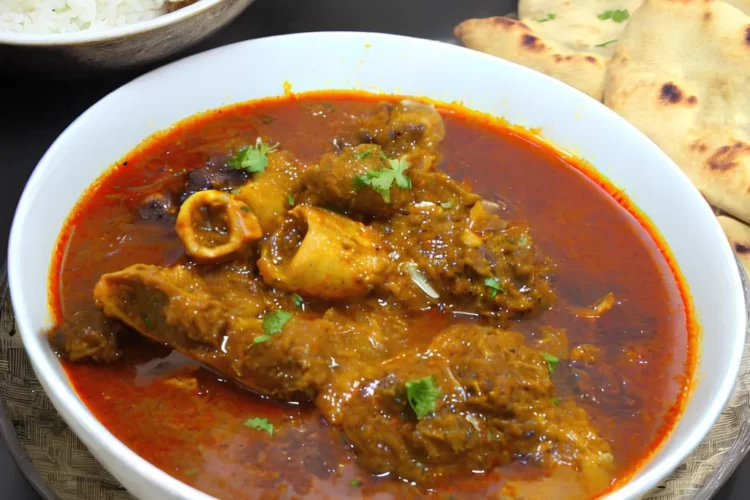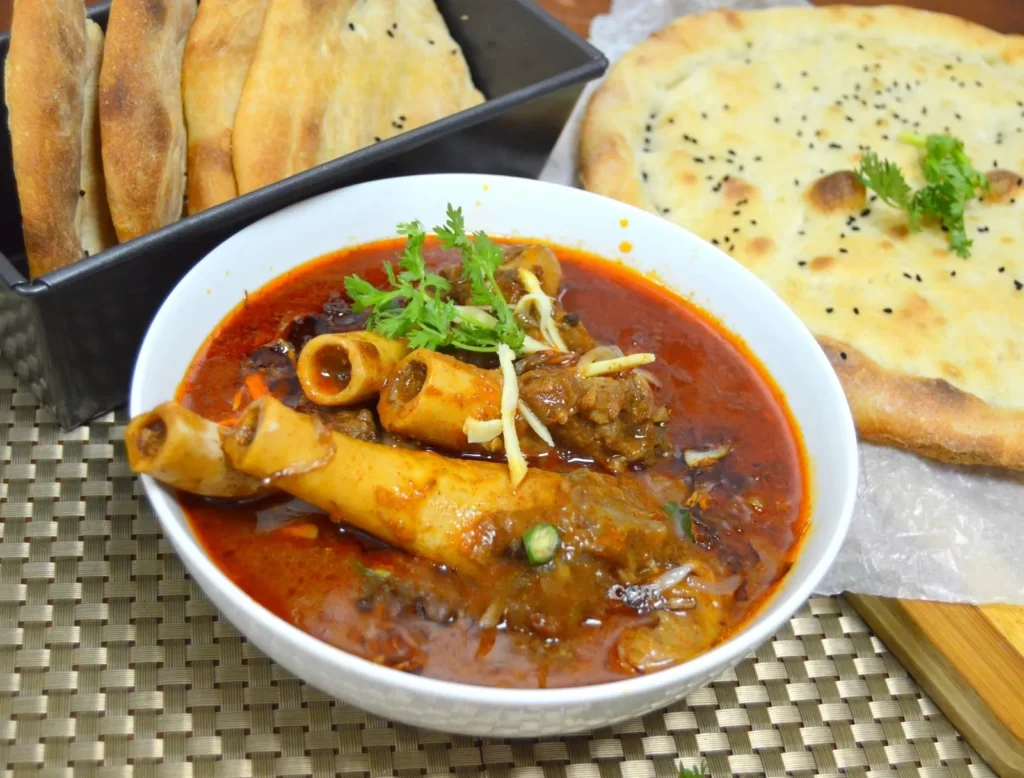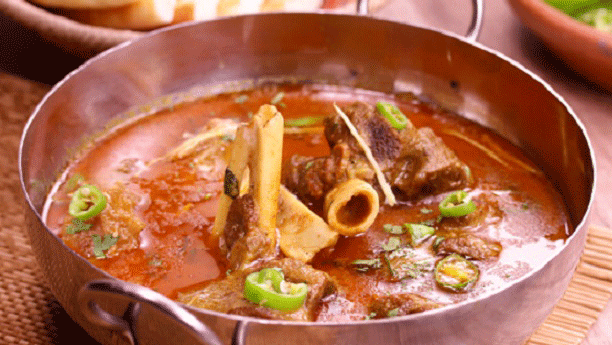Are you a food enthusiast who loves to indulge in the rich and aromatic flavors of traditional dishes? If you are, then you’re in for a treat! Today, we present to you the mouthwatering and legendary Mutton Nihari recipe – a gastronomic delight that has been tantalizing taste buds for generations.
Introduction to Mutton Nihari
Nihari is a popular and cherished slow-cooked stew that originated in the bustling streets of Old Delhi during the Mughal era. Its roots can be traced back to the kitchens of royal families, where expert chefs concocted this dish to perfection using the finest ingredients and a blend of tantalizing spices.
The word “Nihari” itself means “morning” in Arabic, indicating its history as a breakfast dish that fueled warriors and royals for their day ahead. Over time, this delectable dish spread across the Indian subcontinent and beyond, winning hearts and taste buds with its mesmerizing aroma and unforgettable taste.
The Irresistible Aroma and Flavor
What sets Mutton Nihari apart is its irresistible aroma and rich, hearty flavor. The secret lies in the slow-cooking process, where succulent pieces of mutton are simmered for hours in a melange of fragrant spices, including cardamom, cloves, cinnamon, and bay leaves. The aromatic blend of ginger, garlic, and onions adds depth to the dish, while the use of bone marrow imparts a velvety texture that is unmatched.
Ingredients You’ll Need
- 1 kg of tender mutton, cut into pieces
- 4 tablespoons of ghee or clarified butter
- 2 large onions, finely sliced
- 1 tablespoon of ginger paste
- 1 tablespoon of garlic paste
- 2 tablespoons of wheat flour
- 1 teaspoon of red chili powder
- 1 teaspoon of turmeric powder
- 1 teaspoon of coriander powder
- 1 teaspoon of cumin powder
- 4-5 green cardamom pods
- 4-5 cloves
- 1-inch cinnamon stick
- 2 bay leaves
- 1 teaspoon of garam masala
- Salt, to taste
- Fresh coriander leaves and sliced ginger, for garnish
Step-by-Step Preparation
- Marinate the Mutton:
- In a large bowl, mix the mutton pieces with ginger paste, garlic paste, red chili powder, turmeric powder, and a pinch of salt. Allow it to marinate for at least 30 minutes to let the flavors penetrate the meat.
- Sear the Onions:
- In a heavy-bottomed pan or a traditional handi, heat the ghee over medium heat. Add the finely sliced onions and sauté them until they turn golden brown, releasing their sweet aroma.
- Slow-Cook the Mutton:
- Add the marinated mutton to the pan and cook it on low heat. Let it simmer in its juices until the meat becomes tender and succulent.
- Prepare the Spice Mix:
- In a separate pan, dry roast the green cardamom pods, cloves, cinnamon stick, and bay leaves until they release their fragrance. Grind these spices to a fine powder using a mortar and pestle.
- Enhance the Flavor:
- Add the freshly ground spice mix to the slow-cooked mutton, along with coriander powder, cumin powder, and garam masala. Mix well, ensuring the flavors infuse the dish.
- Thicken the Gravy:
- In a small bowl, mix the wheat flour with some water to form a smooth paste. Gradually add this paste to the simmering mutton to thicken the gravy and give it a velvety texture.
- Let It Simmer:
- Cover the pan and let the Mutton Nihari simmer on low heat for another hour or until the meat is tender and falls off the bone effortlessly.
- Garnish and Serve:
- Once the Mutton Nihari reaches the desired consistency, garnish it with fresh coriander leaves and sliced ginger. Serve it piping hot with naan, paratha, or steamed rice, and let the flavors transport you to a world of culinary bliss.
Tips for mutton nihari:
- Choose Quality Mutton: Opt for tender and fresh mutton from a reputable source. The quality of the meat plays a crucial role in achieving the desired texture and taste of the Nihari.
- Marinate Well: Allow the mutton to marinate for at least 30 minutes to an hour. This helps the spices penetrate the meat, infusing it with flavor.
- Low and Slow Cooking: Nihari is all about slow-cooking on low heat. This process allows the meat to tenderize, and the flavors to blend beautifully.
- Use Bone Marrow: For an authentic and velvety texture, include bone marrow in the Nihari. It enhances the richness of the gravy.
- Sauté Onions Thoroughly: Ensure that the onions are sautéed until they turn golden brown. This step contributes to the deep, caramelized flavor of the dish.
- Dry Roast Spices: Dry roasting the whole spices before grinding intensifies their fragrance and elevates the taste of the Nihari.
- Thicken the Gravy with Wheat Flour: Prepare a smooth wheat flour paste to thicken the gravy. This imparts a luscious consistency to the Nihari.
- Rest before Serving: Let the Nihari rest for a few minutes after cooking. This allows the flavors to meld, resulting in a more delightful eating experience.
Delightful Variations:
- Chicken Nihari: If you prefer a lighter version of Nihari, substitute mutton with chicken. The cooking time will be shorter, but the flavors will be equally enticing.
- Vegetable Nihari: For a vegetarian twist, you can replace the mutton with a variety of vegetables like potatoes, carrots, and cauliflower. The spices and slow-cooking process will infuse the vegetables with a delightful taste.
- Hyderabadi Nihari: Hyderabadi Nihari features a unique blend of spices, including nutmeg and mace, adding a distinct flavor to the dish. It is a must-try for spice enthusiasts.
- Kolkata Nihari: Kolkata Nihari is known for its subtle spiciness and addition of hard-boiled eggs, taking the culinary experience to a whole new level.
Serving Suggestions for Mutton Nihari
- Serve Mutton Nihari with classic Indian bread like naan, paratha, or roomali roti. The soft and flaky texture of these bread varieties pairs perfectly with the rich and velvety gravy of Nihari.
- For a wholesome meal, serve Mutton Nihari with fragrant steamed Basmati rice. The combination of tender mutton and flavorful gravy over fluffy rice is a match made in culinary heaven.
- Serve a selection of traditional side dishes alongside Mutton Nihari. Some popular choices include cucumber and onion salad, raita (yogurt-based condiment), or pickles for a burst of contrasting flavors.
- For a royal touch, serve Mutton Nihari with saffron-infused rice. Soak a few strands of saffron in warm milk and mix it with cooked Basmati rice to impart a subtle and luxurious aroma.
- If you’re serving Mutton Nihari for a gathering or special occasion, consider a family-style dining setup. Place the large handi or serving bowl at the center of the table, allowing everyone to help themselves and bond over this heartwarming dish.
Frequently Asked Questions (FAQs)
Q1: Can I use any cut of mutton for Nihari?
A: While Nihari is traditionally made with stewing cuts like shanks or shoulder, you can use other cuts like leg or chops. However, stewing cuts with bones are preferred as they enhance the flavor and texture.
Q2: Can I make Mutton Nihari in advance?
A: Absolutely! In fact, Nihari tastes even better when reheated the next day as it allows the flavors to meld together. Just store it in an airtight container in the refrigerator and reheat gently before serving.
Q3: Can I make Nihari without ghee or clarified butter?
A: While ghee imparts a unique flavor to Nihari, you can substitute it with vegetable oil or any other cooking fat of your choice. However, ghee does add an authentic touch to the dish.
Q4: Can I customize the spice level of Mutton Nihari?
A: Absolutely! The spice level can be adjusted according to your taste preferences. If you prefer it spicier, increase the amount of red chili powder or add a few chopped green chilies during cooking.
Q5: Is it necessary to use bone marrow in Nihari?
A: While bone marrow adds richness and depth to the gravy, you can omit it if you prefer a leaner version of the dish. However, the bone marrow does contribute to the traditional and authentic taste of Nihari.
Q6: Can I freeze leftovers?
A: Yes, you can freeze leftover Nihari in airtight containers or freezer-safe bags. It can be stored for up to 3 months. Just thaw it overnight in the refrigerator and reheat gently before serving.
Q7: Can I use beef instead of mutton for Nihari?
A: Yes, you can use beef as a substitute for mutton to make Beef Nihari. The cooking process and spices remain similar, and the result is an equally delightful and flavorful dish.
Conclusion
The Mutton Nihari recipe is a treasure trove of flavors that will undoubtedly leave an indelible mark on your taste buds. Its rich history and unforgettable taste make it a dish worth savoring and sharing with loved ones. By following our step-by-step guide, you can recreate this gastronomic delight in your own kitchen and immerse yourself in the enchanting world of Indian cuisine.
Also, read:
- Oreo Mug Cake Recipe
- Methi Matar Malai recipe
- How to make chenna
- Handi Paneer Recipe
- Til laddu recipe (til ke laddu)
follow us on instagram, facebook and youtube




